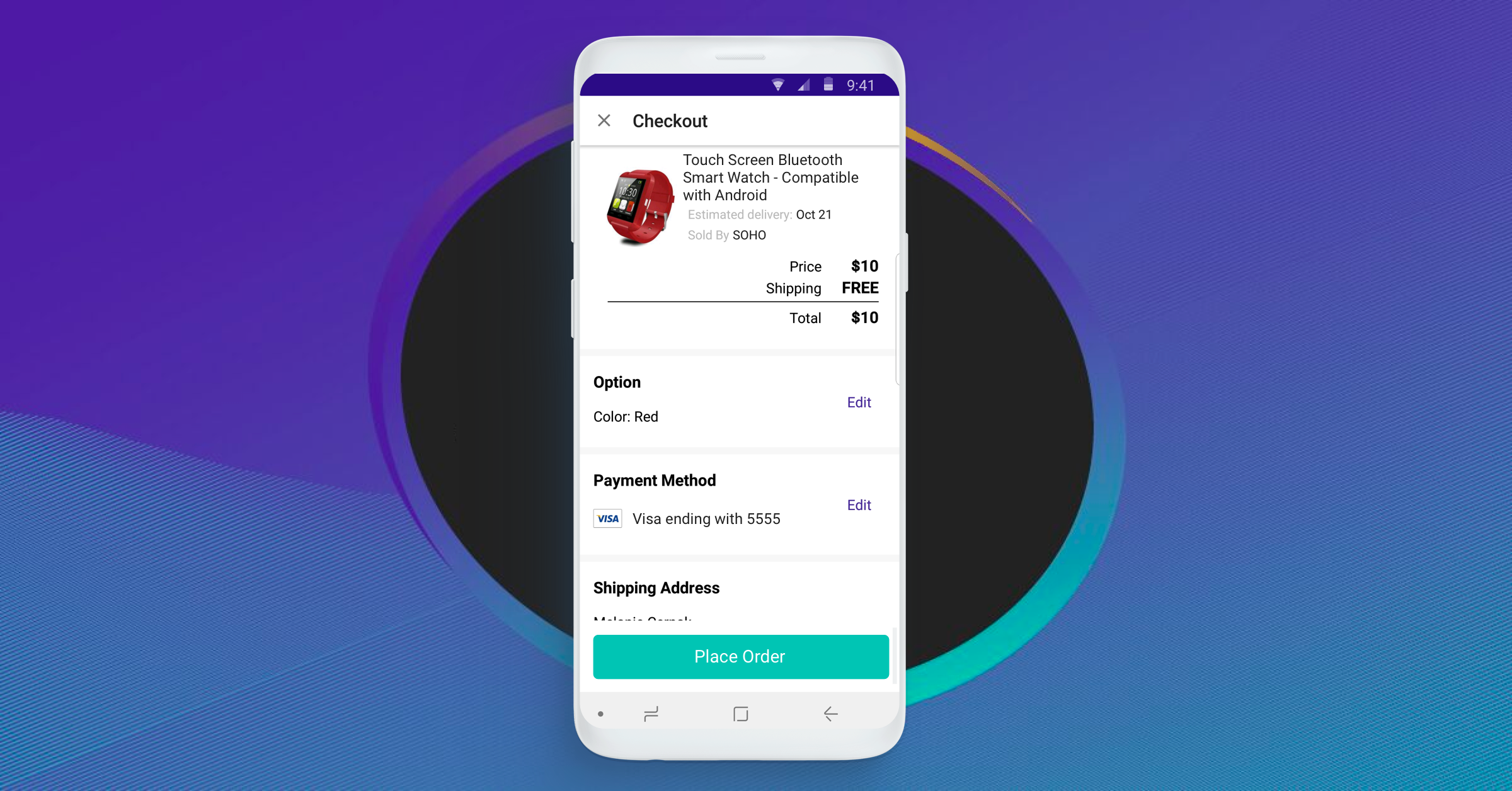
Checkout flow redesign
My role: Lead Product Designer (UX, Interaction)
Implemented: June 2018

Checkout Flow Redesign
Tophatter had an outdated checkout flow. Working with our lead Android developer, I redesigned the checkout flow to keep the ease and efficiency of the current checkout, while developing an experience that builds trust and sets context. The new checkout flow resulted in a:
12% increase in new user pGTV/user (paid Gross Transactional Value per User)
9% increase in new user payer conversion
5% increase in return user pGTV/user
Android’s checkout experience became the model for iOS and web.
RESPONSIBILITIES
Product strategy. Defined the product strategy and outlined business goals
User research. User research to understand existing problems
Personas. Persona development in collaboration with our marketing team
Benchmarking. Competitive benchmarking to assess best practices
UX / UI design. Wireframes and hi-fidelity designs
About Tophatter
Tophatter is a mobile discovery shopping marketplace that connects buyers and sellers from around the world in real-time 90-second auctions for jewelry, electronics, beauty, and household items. Most of Tophatter’s auctions start at $1 and are designed to generate excitement and competition among shoppers. Tophatter has roughly 20 million shoppers and sells 100,000 items a day.
Checkout before redesign
Before I began building a new checkout flow, I wanted feedback from our shoppers on what they thought of the current experience. I worked with our UX Researcher, Shawna Kelly, on understanding shopper sentiment:
The lack of transparency and context in the checkout experience made Tophatter seem untrustworthy, especially among new shoppers.
From my research, I created the following “how might we” statement to frame the checkout redesign:
How might we help shoppers feel more confident when making a purchase?
Personas
I considered both new and return shoppers in redesigning the checkout experience. I worked with the marketing team to develop personas and define the audience:
Competitive benchmarking
I started my redesign by benchmarking eCommerce competitors and assessing best practices for a checkout experience. I noticed many new features like “swipe to pay,” but had to decipher what actually is impactful. Here’s what I noticed in benchmarking that would drive the business forward:
Ability to review order before adding payment and shipping
Clear context about the flow
Consolidated/accordion style screen before placing order
Wireframes
For new shoppers, I wanted to build an experience that earns trust so shoppers feel confident entering their sensitive information, like payment and shipping address. After gaining trust, I aimed to design a flow that reduces friction and makes it easy for return shoppers to purchase items.
In addition to building an experience for two audiences, I also designed for two different formats: auctions and traditional buy now. Auctions have a different launch point to the payment flow and start with a modal that congratulates shoppers on their auction win.
After reviewing our personas and benchmarking, I updated our “how might we” statement:
How might we build a checkout experience that’s quick and easy while still earning trust?
Earning trust among new shoppers
Making it easy for return shoppers
Decision making & trade-offs
My first instinct in the redesign was to create a magical “Congrats you Won!” modal that shows the product image and price.
I created a high-fidelity version and tested with shoppers. I found that the full-screen modal was actually overwhelming shoppers and delaying them advancing in the checkout experience. There were also engineering constraints that the the modal would take more time to develop.
In considering trade-offs, I wanted to tie my decision to the business goal of improving payer conversion and the shopper goal of reducing confusion. With that, I went in the direction of a more discrete modal instead of a full-screen modal with the idea that more people were likely to tap and enter the payment flow with a more cryptic modal.
